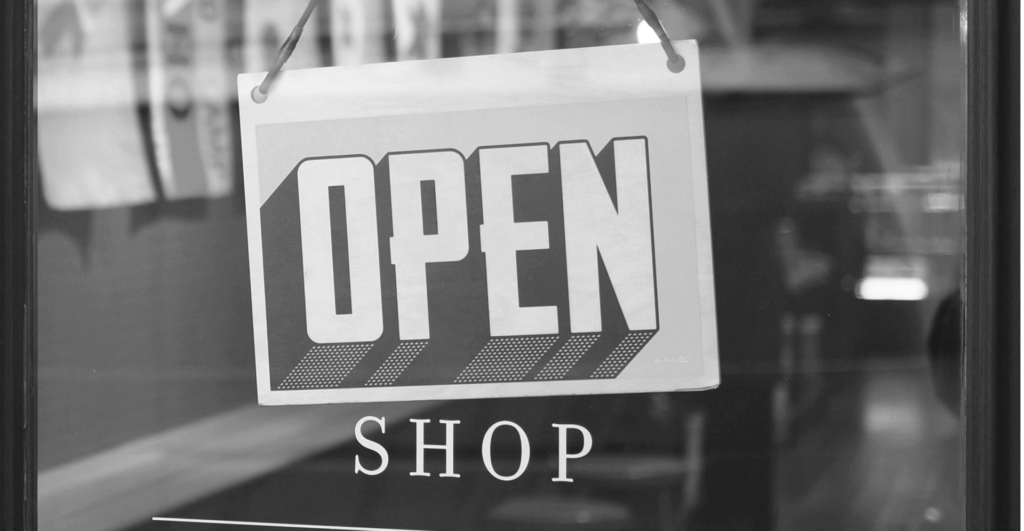Black Friday represents the most important day of the year by far for many modern businesses. Forbes reports that consumers spent almost $10 billion online during Black Friday 2023, up 7.5% from the previous year. With many businesses banking on Black Friday deals to kick off a golden quarter this year, there’s a lot on the line.

However, digital pressure and pain points always attract cybercriminals, especially when there’s money involved. Plenty of experts warn consumers to stay safe during ecommerce events, but retailers themselves face increasing attacks during sales events like these. As always, forewarned is forearmed, so here, we’re tackling the top five threats facing retailers among the Black Friday deals in 2024.
1. Traffic surges: A threat to your domain infrastructure
On Black Friday, consumers swarm department stores and online shops alike, filling carts and choosing deals in webpages and malls. Physical retailers ensure they’ve got enough security, and the right property to service all their customers, and if they’re not careful, demand overwhelms their resources.
The same goes for online brands, who need robust domain security to ensure their digital infrastructure stands firm throughout the surge. Tools like AnyCast DNS support effective website availability and responsiveness, in the face of DDoS attacks and sales surges. Domain management ensures brands have all the domains and extensions they need, including TLDs like .blackfriday. Failing to optimize your domain portfolio also leaves your online outlets vulnerable to cybersquatting.
2. Typosquatting cybercriminals exploit Black Friday deals
Typosquatting presents another major challenge for brands among the Black Friday deals, threatening to ruin the fun of this ecommerce extravaganza. Cybercriminals know that during Black Friday, shoppers are eager to find the best deals and often make hasty decisions. These scammers exploit that urgency by creating domains that mimic legitimate brands, aiming to deceive consumers and redirect traffic to fraudulent sites. For instance, a cyberquatter might register a domain like ebrandd.com or ebr4nd.com, small tweaks that a vistor might not notice in the search bar.
When consumers fall for these fake Black Friday deals, brands suffer in multiple ways. First, cybersquatting redirects valuable traffic away from legitimate sites, directly impacting sales. Secondly, consumers tricked into purchasing from a fake site may associate the negative experience with the real brand, leading to reputational damage. Beyond that, resolving issues with fraudulent domains often requires costly and time-consuming legal action.
To defend against these tactics, many brands prepare ahead of major sales events like Black Friday by implementing domain blocking tools. Solutions such as global block services, the Domain Protected Marks List (DPML), and registrations with the Trademark Clearinghouse (TMCH) can help prevent cybersquatters from capitalizing on brand names and misleading customers.
3. Fake shops thrive
Brands can’t capitalize on Black Friday deals when fake shop scammers lure their clients away. Fake shops, an increasing problem across industries and ecommerce landscapes, trick traffic with professional-looking ecommerce pages. These devious cyberscams spoof product listings at discount prices, rolling out fully-functional payment systems to steal hard-earned cash.
Once upon a time, it was easy to spot a fake shop, as they often featured typos, shoddy user interfaces, and gaps in their sitemaps. However, with the rise in generative AI, these scam pages look almost indistinguishable from the real thing. They spread rapidly, using automated systems to clone legitimate store designs and launch multiple scam sites at once. Brands no longer fight against one or two fake shops, or even tens or hundreds; we’re talking about thousands and tens of thousands of malicious domains hosting fraudulent ecommerce platforms to sell fake goods. They often redeploy innovative techniques like CDNs to spread their wares and evade detection, as we’ll discuss in another upcoming guide dedicated to the topic.

Fake shops thrive during major sales events like Black Friday, taking advantage of consumers’ eagerness for discounts. They spread rapidly, using automated systems to clone legitimate store designs and launch multiple scam sites at once. These shops often target consumers through ads on social media platforms like Facebook and Instagram, making it difficult for brands to track and shut them down. Advanced tactics like these make fake shops almost impossible to detect, let alone remove, without effective tools and strategies. To see what’s out there ahead of Black Friday, get a free fake shop audit now.
4. Counterfeit listings spoof Black Friday deals to steal revenue
Scammers don’t even need to host their own fake shops when counterfeit listings and IP infringement thrive on popular ecommerce markets. Western brands struggle to search the most popular platforms they know about, like Amazon and eBay, for listings that rip off their imagery, product names, and business names to sell counterfeit goods. However, counterfeits are not just limited to these familiar platforms; they also appear on marketplaces around the world, from Tokopedia in Indonesia to Pinduoduo in China. Black Friday deals represent just the tip of the iceberg, with ecommerce events like Double Eleven in China spawning waves of counterfeit products, and Cyber Monday and Christmas sales just over the horizon.
Brands working alone face an uphill battle as they must learn how to flag IP infringements on each platform, dealing with complex procedures, form submissions, and long waiting times while counterfeit listings continue to multiply. These time-consuming efforts can quickly become overwhelming, especially when sales events ramp up activity. To make the most of your Black Friday deals, consider exploring Online Brand Protection services to ease the burden of anti-counterfeiting efforts. This will allow your team to focus on what truly matters during the ecommerce rush and beyond.
5. Phishing attacks
Phishing attacks strike businesses with a double-edged sword during Black Friday and Cyber Monday. Convincing scam emails target employees with opportunistic collaboration and service offers, ultimately stealing internal data and login credentials to sell on the dark web. At the same time, phishing attacks impersonating the business itself target your consumer base, undermining the most lucrative time of the year. These deceptive emails erode trust and damage your reputation at a critical moment. According to InfoSecurity magazine, there is a 237% increase in phishing emails specifically related to Black Friday and Cyber Monday compared to the period from September 1 to October 31.

Brands must stay vigilant. Monitoring domains that could be convincing enough to launch a phishing email—especially those with MX (email exchange) servers—is crucial. Digital Risk Protection solutions offer the support needed to track potential threats as they develop, alerting your team and taking down suspicious domains before phishing attempts reach any vulnerable inboxes. This proactive approach ensures that your brand and customers remain protected during the ecommerce surge.
Conclusions: How brands stay safe among the Black Friday deals
We’ve covered the challenges posed by traffic surges, which can strain your domain infrastructure. We’ve also explored how typosquatting cybercriminals take advantage of the popularity of Black Friday deals to mislead customers. Beyond that, we tackled the rise of fake shops that deceive consumers and counterfeit listings that steal potential revenue. We also discussed how phishing attacks spike during both Black Friday and Cyber Monday, putting brands and their customers at risk.
With all these factors in mind, it’s clear that these threats can be overwhelming. However, staying informed is the first crucial step in safeguarding your brand. The next step is to take action, starting with a free brand audit to identify potential risks and ensure you’re protected this Black Friday and beyond. In the meantime, stay tuned for our upcoming guide to CDNs (Content Delivery Networks), and their role in multiplying fake shops and other online scams facing your brand.



